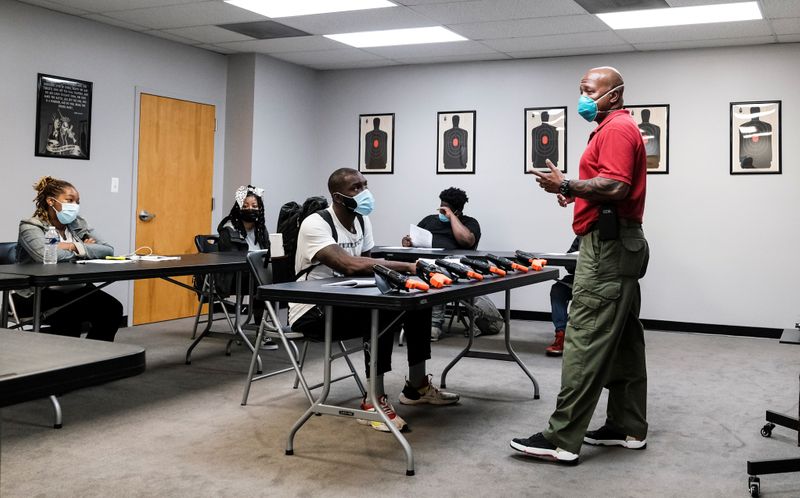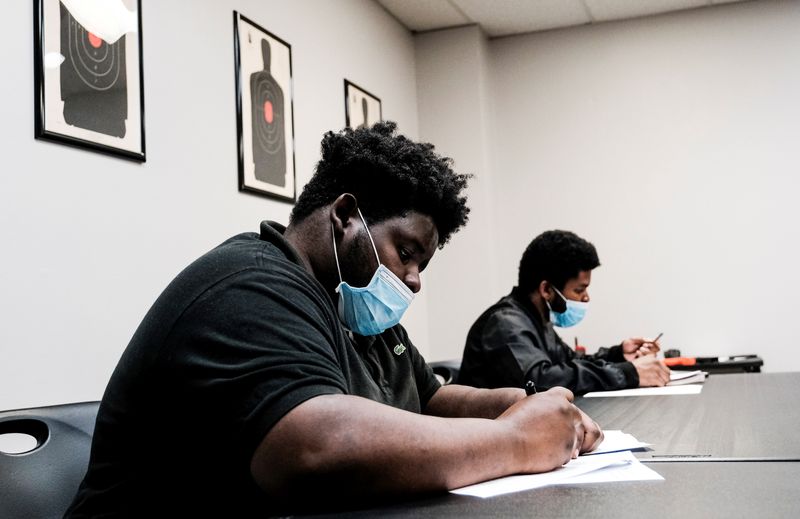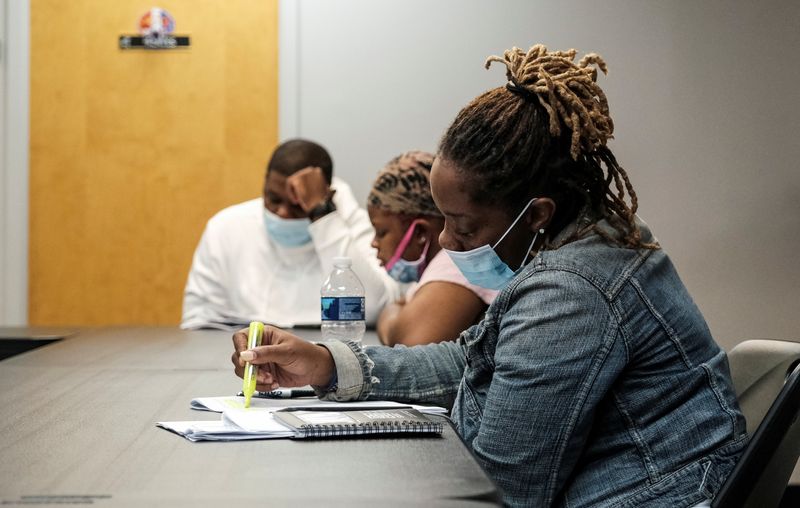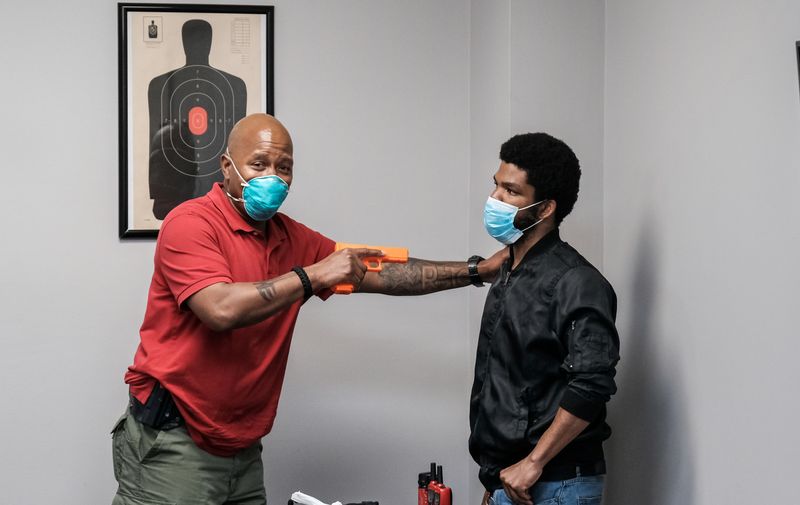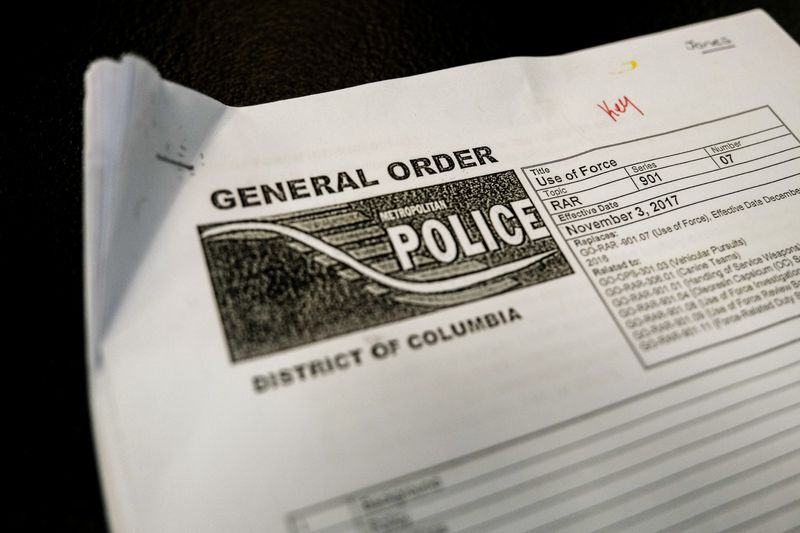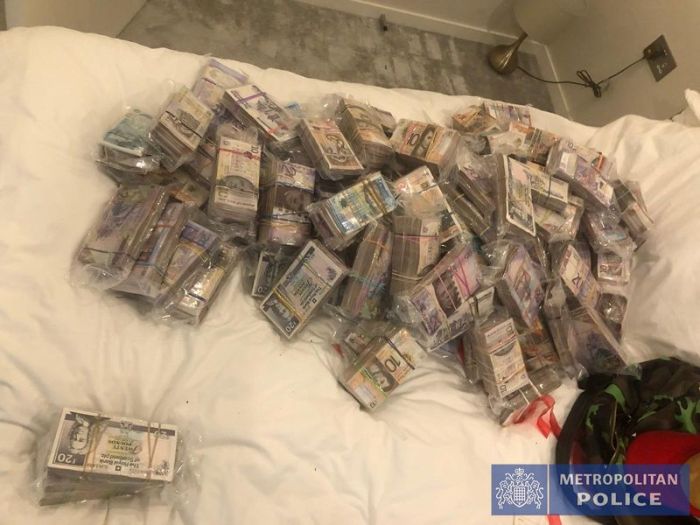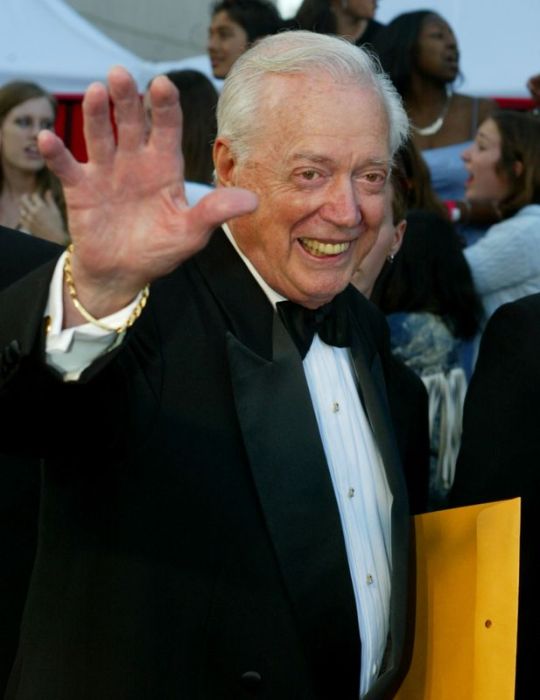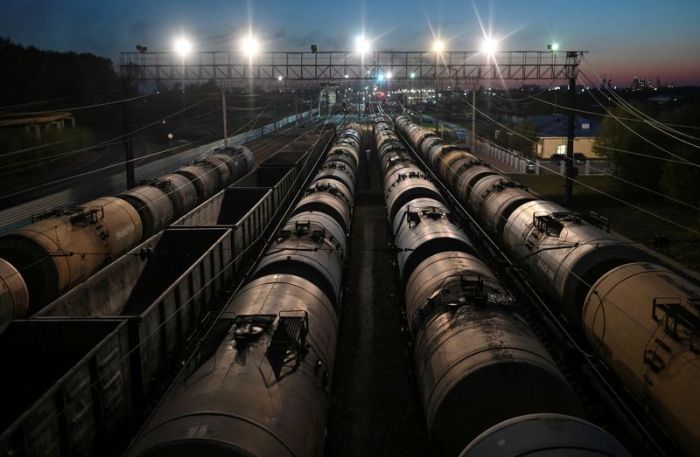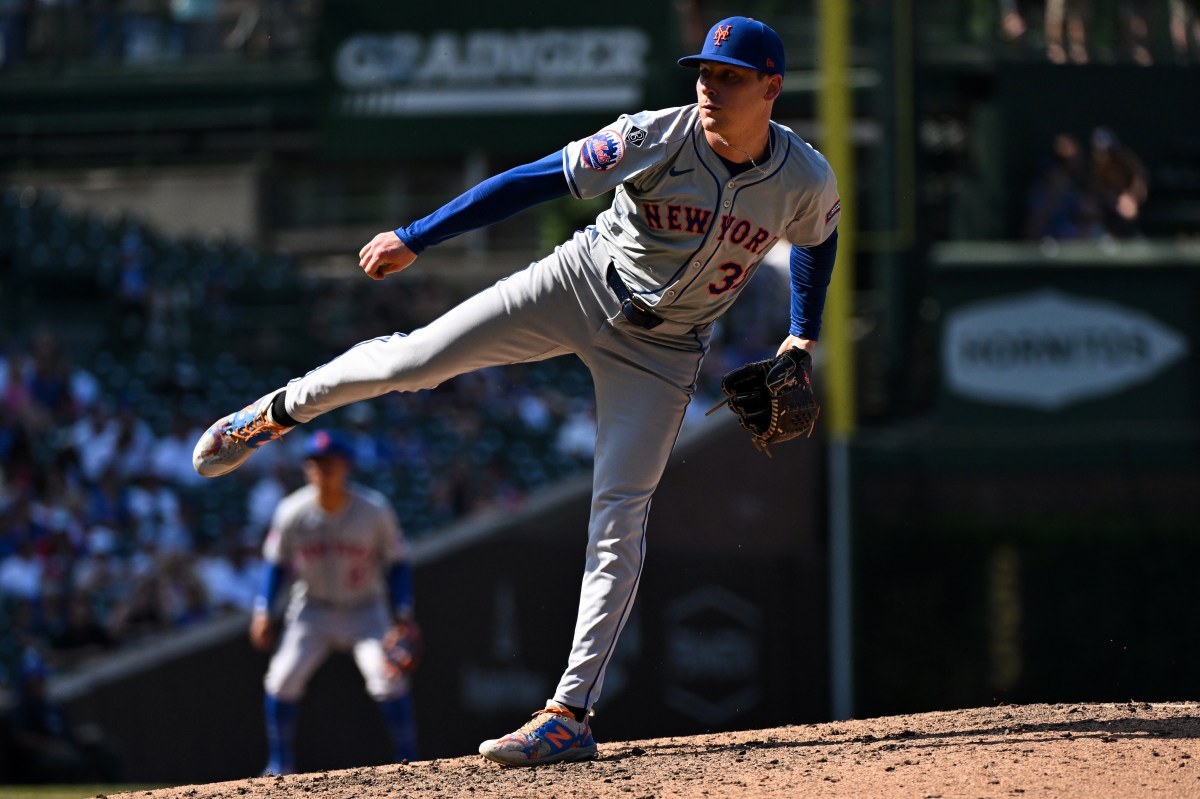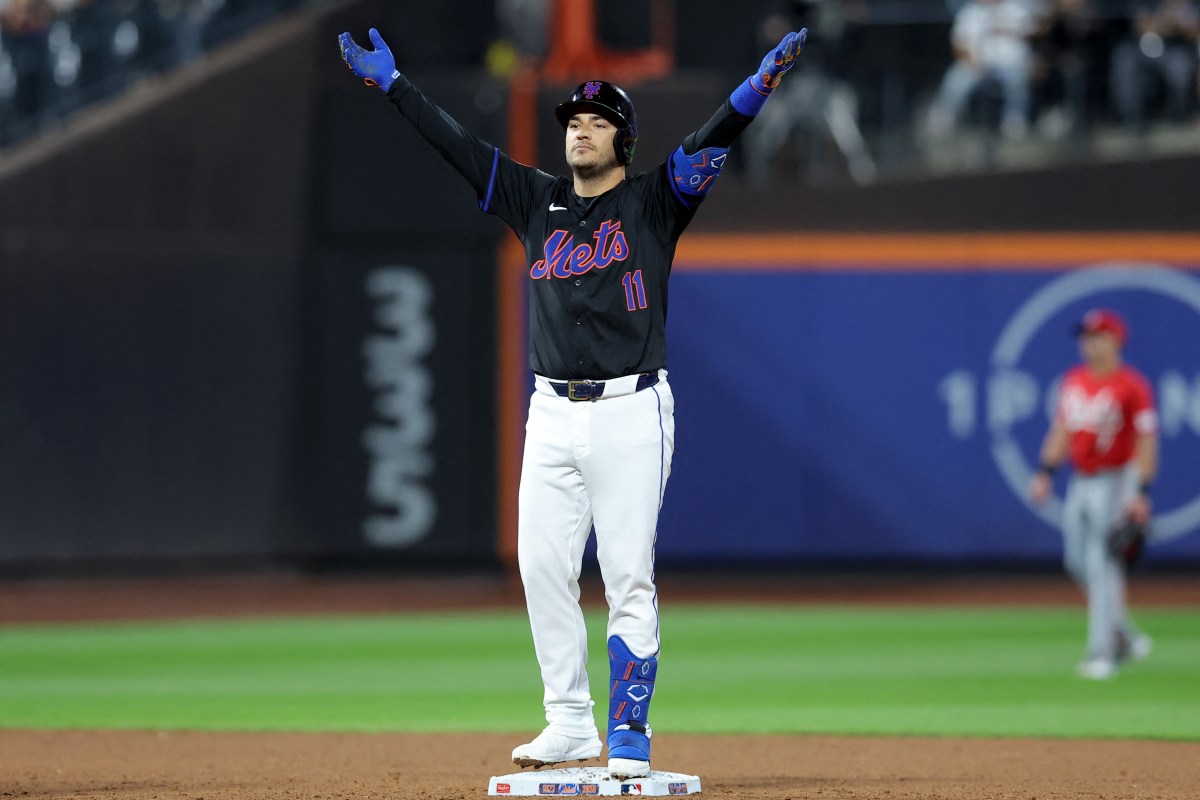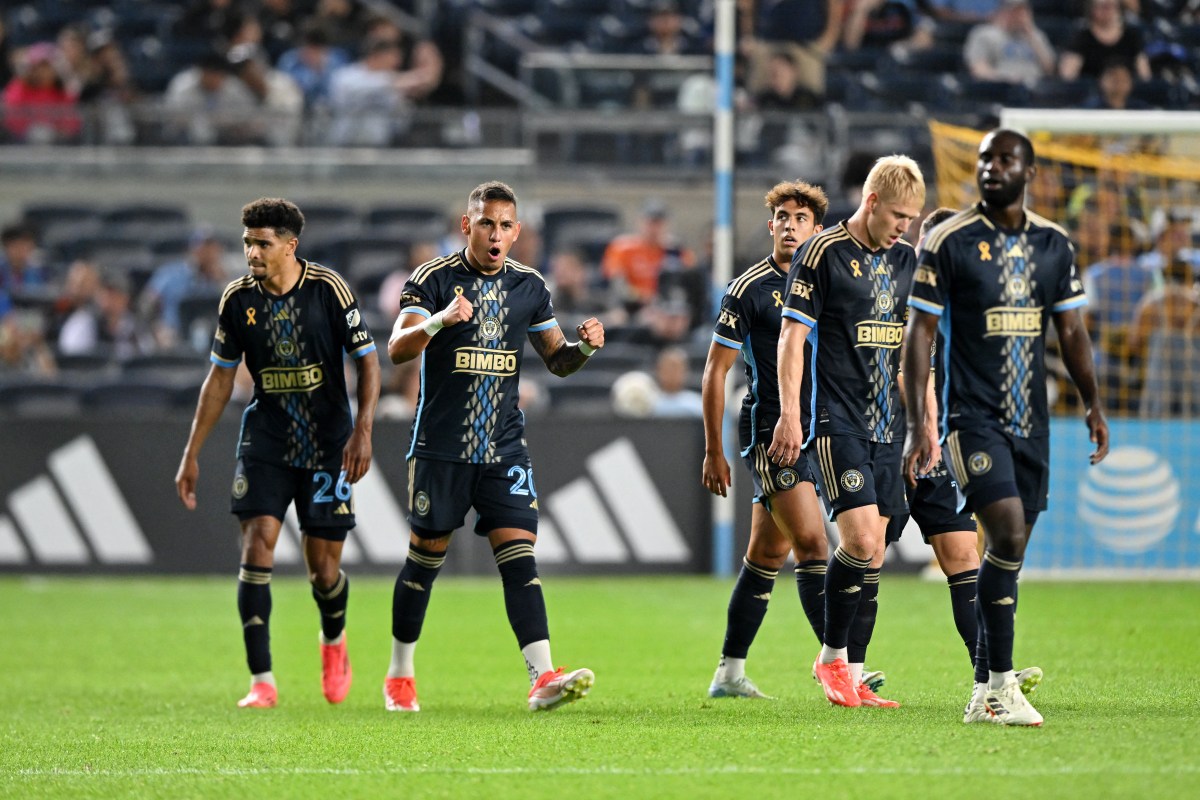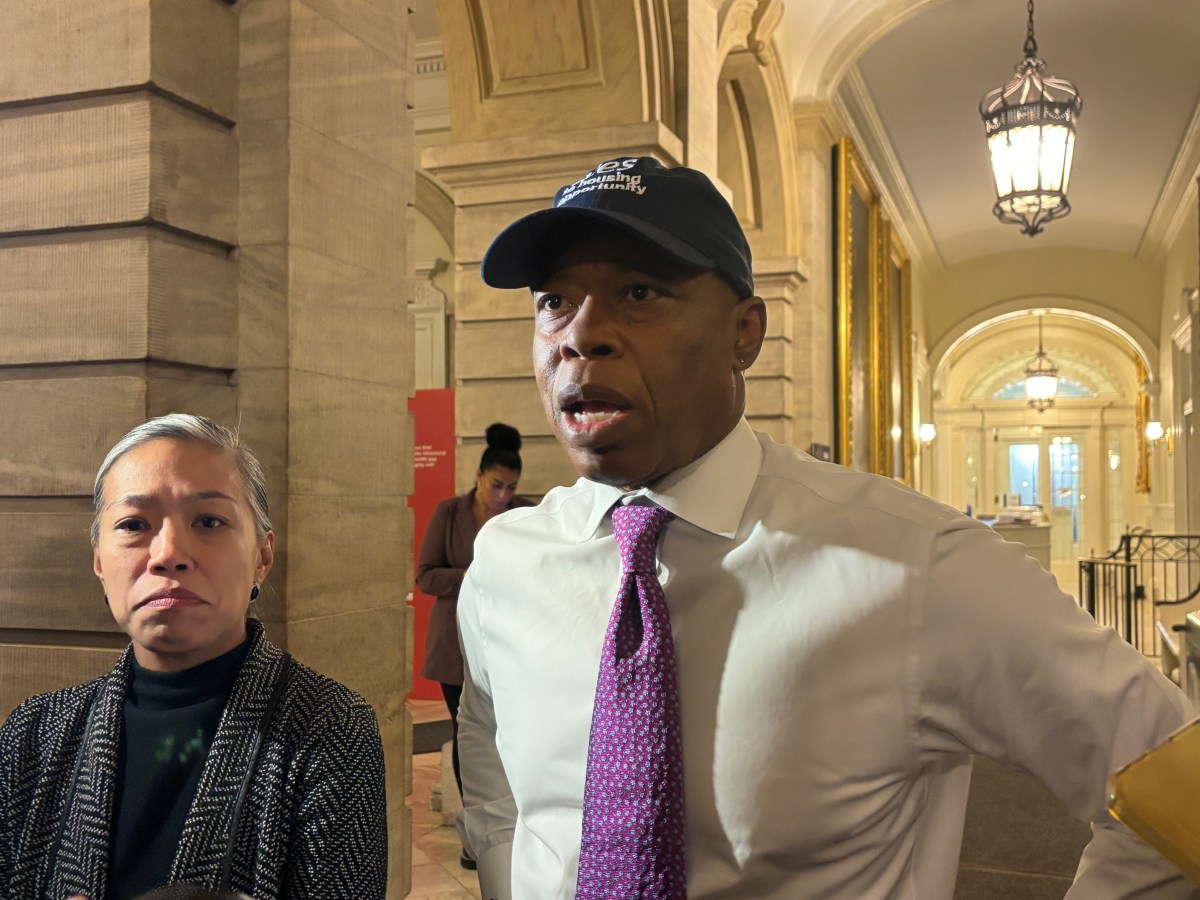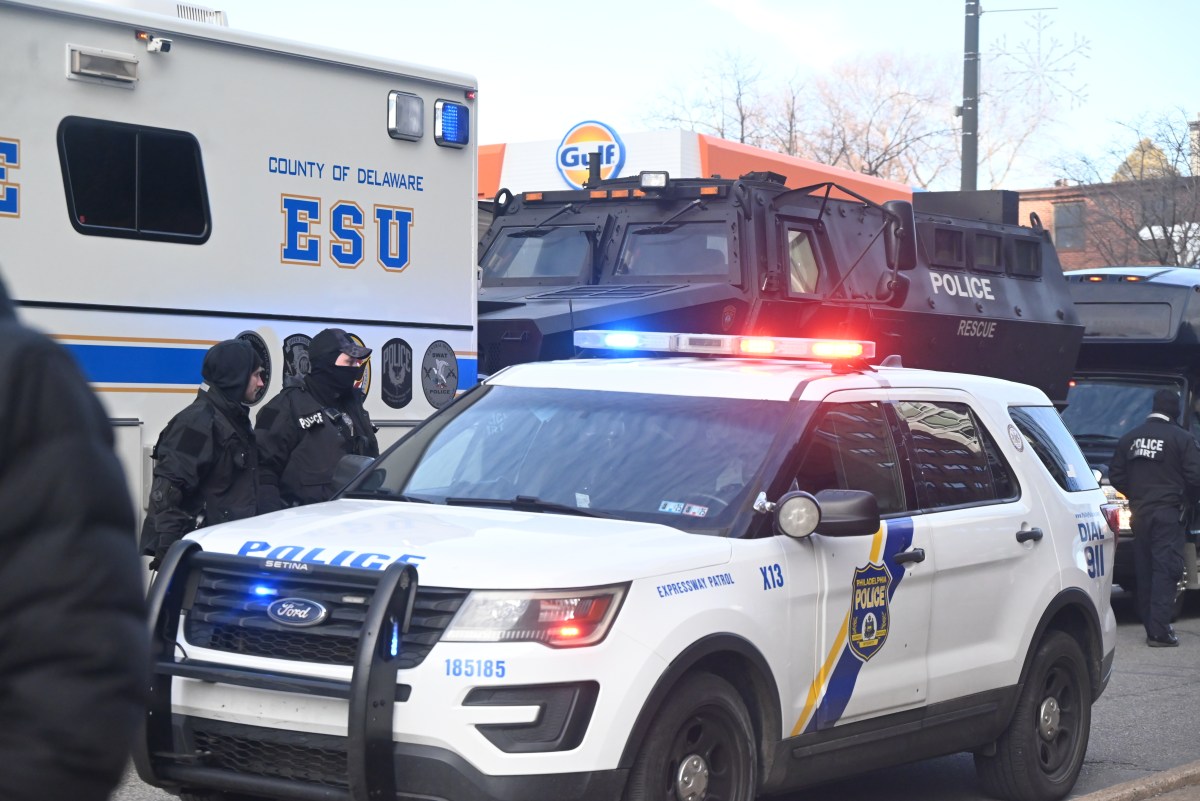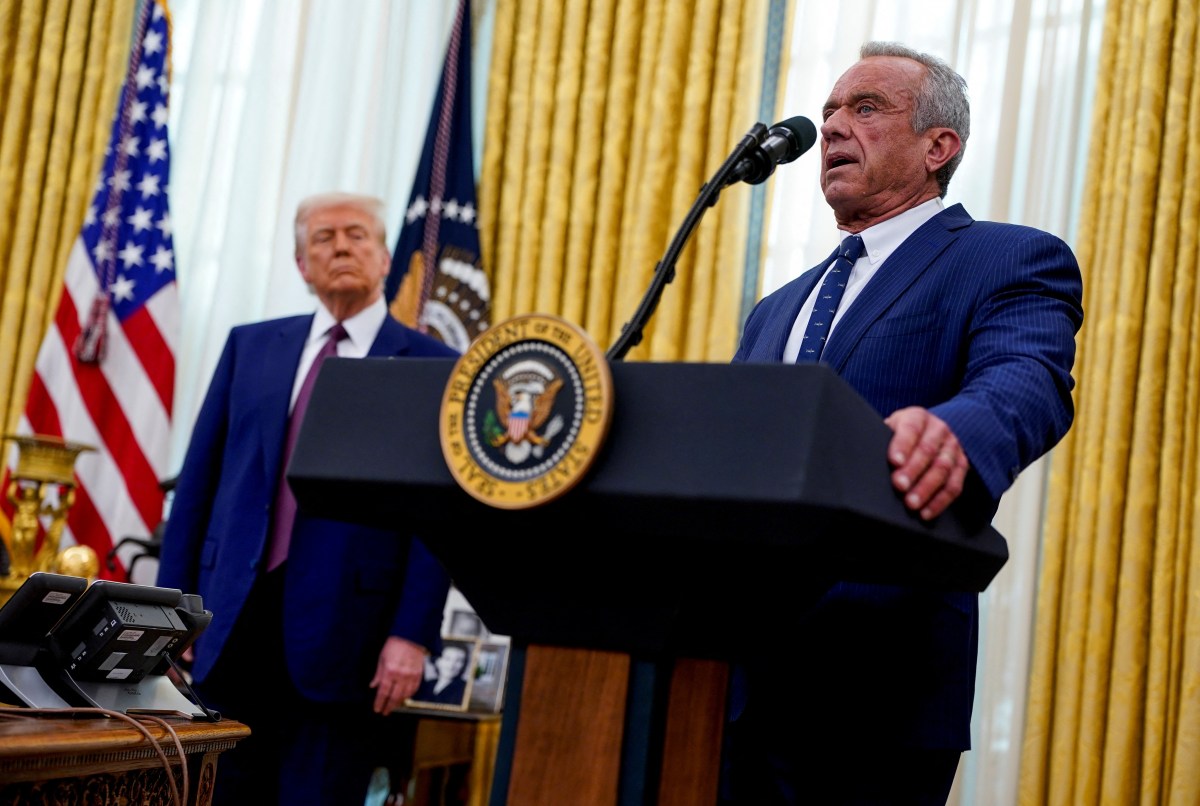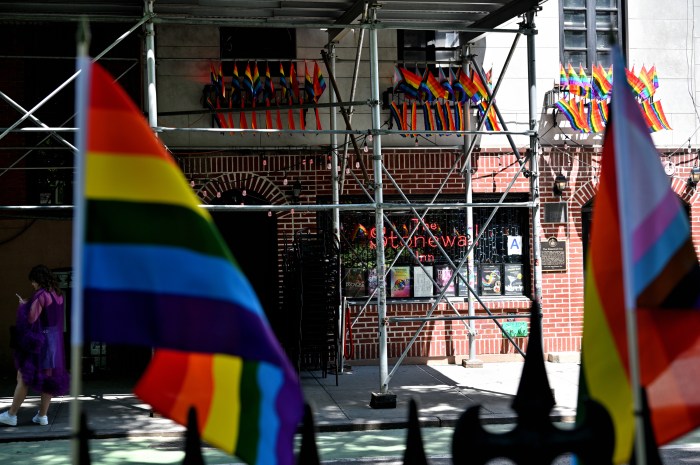WASHINGTON (Reuters) – Thomas Boone has spent 22 years as a police officer in Prince George’s County, Maryland, a predominantly Black suburb of Washington, proudly wearing his uniform and driving his patrol car to coach kids’ football and basketball teams.
Some of those athletes are now 18 to 20 years old, including his own son. They might have pursued careers in law enforcement, Boone believes, but the death of George Floyd has made that less likely due to the anger directed at police, particularly in Black communities
“When we go to the grocery store in town, we have to get stopped to be asked, ‘Why do you all do this to us?'”, said Boone, a lieutenant.
Floyd’s killing by a white policeman in May has triggered fresh scrutiny of police brutality against African Americans. Black men are more than twice as likely to die in an interaction with U.S. police than white ones, a 2018 study showed.
Some policing experts believe one way to address the crisis is to attract more Black Americans to law enforcement, and promote them to the top ranks. U.S. police forces remain generally whiter than the community that surrounds them, despite decades of attempts to reform.
Whites accounted for 71.5% of the 701,000 sworn local police officers in the United States in 2016, Bureau of Justice Statistics data show, compared to an estimated 60% of the population. African Americans account for 11.4% of local police forces, compared to around 13% of the population, a drop from 11.9% in 2013.
The nationwide averages mask much bigger gaps in big cities, which are both less white and have more police per capita than many rural areas, suburbs, and small towns.
Reuters spoke to more than a dozen former and current law enforcement officers, as well as criminal justice experts and families of police officers. Black representation in U.S. police forces has long been hampered by discrimination in hiring and promotion, they say, and some warn it could shrink further.
“George Floyd is such a ground-breaking situation. It is definitely going to affect the recruitment of minorities for a long time,” said Sergeant Anthony Russell, a former recruitment supervisor who heads a Black officers’ advocacy group in Baltimore County, Maryland.
He and other Black officers said there are several reasons why the numbers of African Americans in the blue uniform are low, including application tests skewed against Black candidates, straightforward nepotism in the senior ranks and a lingering reluctance by Blacks to be part of a group that enforced segregation in the South decades ago.
FEDERAL EFFORTS
The race gap in U.S. policing remains pronounced in big cities and districts, and among top ranks, despite years-long attempts to rectify it.
Department of Justice (DOJ) data shows that 90% of the police chiefs in local departments and 81% of supervisors above sergeant were white in 2016 – compared to 4% and 9% African American, respectively
In New York City, 47.7% of uniformed officers are white and 15% Black, compared to 42.7% and 24.3% of the population. Some 80% of officers are white in Baltimore County, compared to 57% of the population.
U.S. law enforcement agencies stepped up efforts to recruit Black officers after Michael Brown, an unarmed Black man, was fatally shot by a white police officer in Ferguson, Missouri, in 2014.
A task force set up by former President Barack Obama recommended reforms to rebuild trust, including improved diversity. The Trump administration shelved those efforts, and limited oversight of local police departments in 2017.
A DOJ spokesman said the Trump administration changes had no impact on pressure on police forces to hire more minorities.
In 2019, the DOJ filed a lawsuit against Baltimore County’s police department, alleging race discrimination in entry-level hiring. It said the county had engaged in unintended employment discrimination by basing hiring decisions on exams that were not job-related and that disproportionately excluded African-American applicants.
Baltimore County and its police force plan a comprehensive review of police hiring and recruitment and “county leadership strongly believes the police department must look like the communities it serves,” said Sean Naron, a spokesman for the county.
Across the country, Black recruits face nepotism, more problems during background checks, greater barriers to promotion and higher discipline rates once hired, according to Sonia Pruitt, head of the National Black Police Association and other police experts.
“We do not have a lack of qualified black and brown and female candidates, but they are vetted out during the background process, or at the academy, or during the field training program,” Pruitt said.
She said Black recruits are routinely weeded out for reasons that do not hold up white candidates.
But Roberto Villasenor, a Latino former police chief of Tucson and a member of the Obama-era task force on policing, said his department had struggled to find enough minority candidates and that he was not aware of any problems with disparate treatment during hiring by his force.
White officers sometimes feel minority candidates received preferential treatment, he added. All the same, problems in hiring and retaining Black and brown officers remain and police departments need to become more diverse, he said.
“This has got to be one of the driving calls to come out of this and say, ‘Okay, let’s change the face of policing. Not just figuratively, but literally.'”
For Black officers, it can be a discouraging environment for a challenging job where complaints about discrimination can trigger retaliation, officers say.
Boone, in Maryland, says he was moved to another job after collecting data on disproportionate rejections of minority candidates. “I noticed that people who were Black or brown were getting disqualified,” he said. “I had the numbers, but they didn’t want to listen.”
Boone and 11 other minority officers filed a lawsuit in 2018 alleging systemic racism in his force. In June, the police chief named in the ongoing suit resigned.
Boone says he is encouraged by the increased attention to the problems he encountered on the force, but has counseled his own 19-year-old son to pursue a different career.
“Like any parent, would I like my son to follow my footsteps? Yes, I would. Would I like him to do better than me? Yes. I’m not completely sure this is the place for that reason.”
“I DON’T WANT TO BE PART OF THIS”
Regina Holman worked for the Las Vegas police for 28 years, including four years as a recruiter.
After Floyd’s death, Holman’s 18-year-old grandson, whose stepfather is also a police officer, told her a career in law enforcement was not in his future.
“He told me he will never be a cop. He has lost respect for the police because of the things that have happened,” said Holman, president of the Nevada Black Police Association.
Michael Brown, a former Prince George’s County officer who now trains police and security guards, said Floyd’s death and later videos on social media of white police officers mocking the incident so shocked his students that some quit.
“We actually shed some tears in here that very next day,” Brown said of his classroom of about 10 students. “I’ve had officers walk out and say, ‘You know what, I don’t want to be part of this.'”
Brown was fired from his force in 2016 for conduct unbecoming an officer, which he denies. He said he teaches his students that policing is a “noble profession” that allows officers to help their communities. But he also shares his own negative experiences on the police force and is part of the lawsuit against Prince George’s County.
Despite everything, he says, he hopes to rejoin the force someday. “I’m telling you right now, my best time in my life was being a Prince George’s County police officer to deal with my community.'”
(Reporting by Andrea Shalal and Jonathan Landay; Editing by Heather Timmons and Alistair Bell)

